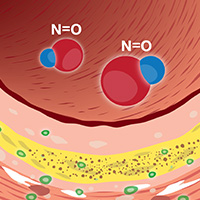Order Code: C301
ABN Requirement: No
Specimen: Serum
Volume: 1.0 mL
Minimum Volume: 0.5 mL
Fasting: Fasting is recommended but not required
Container: Gel-barrier tube (SST, Tiger Top)
Collection:
- Collect and label sample according to standard protocols.
- Gently invert tube 5 times immediately after draw. Do not shake.
- Allow blood to clot 30 minutes.
- Centrifuge for 10 minutes.
Transport: Store serum at 2°C to 8°C after collection and ship the same day per packaging instructions included with the provided shipping box.
Stability:
Ambient (15-25°C): 5 days
Refrigerated (2-8°C): 23 days
Frozen (-20°C): 193 days
Deep Frozen (-70°C): 193 days
Causes for Rejection: Specimens other than serum; improper labeling; samples not stored properly; samples older than stability limits; hemolyzed specimens
Methodology: Tandem Mass Spectrometry (LC-MS/MS)
Turn Around Time: 5 days
Reference Range:
| Analyte | Age | Low Relative Risk ng/mL |
Moderate Relative Risk ng/mL |
High Relative Risk ng/mL |
| ADMA | All Ages | <100 | 100-123 | >123 |
| Analyte | Age | ng/mL |
| SDMA | All Ages | 73-135 |
Clinical Use: ADMA and SDMA may be measured in individuals with multiple risk factors for the development of cardiovascular disease.
Interpretive Information: Elevated ADMA levels are associated with significant subclinical atherosclerosis1,2 while elevated SDMA levels are associated with impaired kidney function3,4 and strongly correlate with reduced eGFR.4
References:
- Maas, Renke, et al. Stroke 2009; 40: 2715-2719.
- Iribarren, Carlos, et al. Eur J Cardio Prev Rehab. 2007; 14: 222-229.
- Schepers, Eva, et al. Clin J Amer Soc Nephrol. 2011; 6: 2374-2383.
- Kielstein, Jan T., et al. J Am Soc Nephrol. 2002; 13: 170-176.
The CPT codes provided are based on AMA guidelines and are for informational purposes only. CPT coding is the sole responsibility of the billing party. Please direct any questions regarding coding to the payer being billed.

